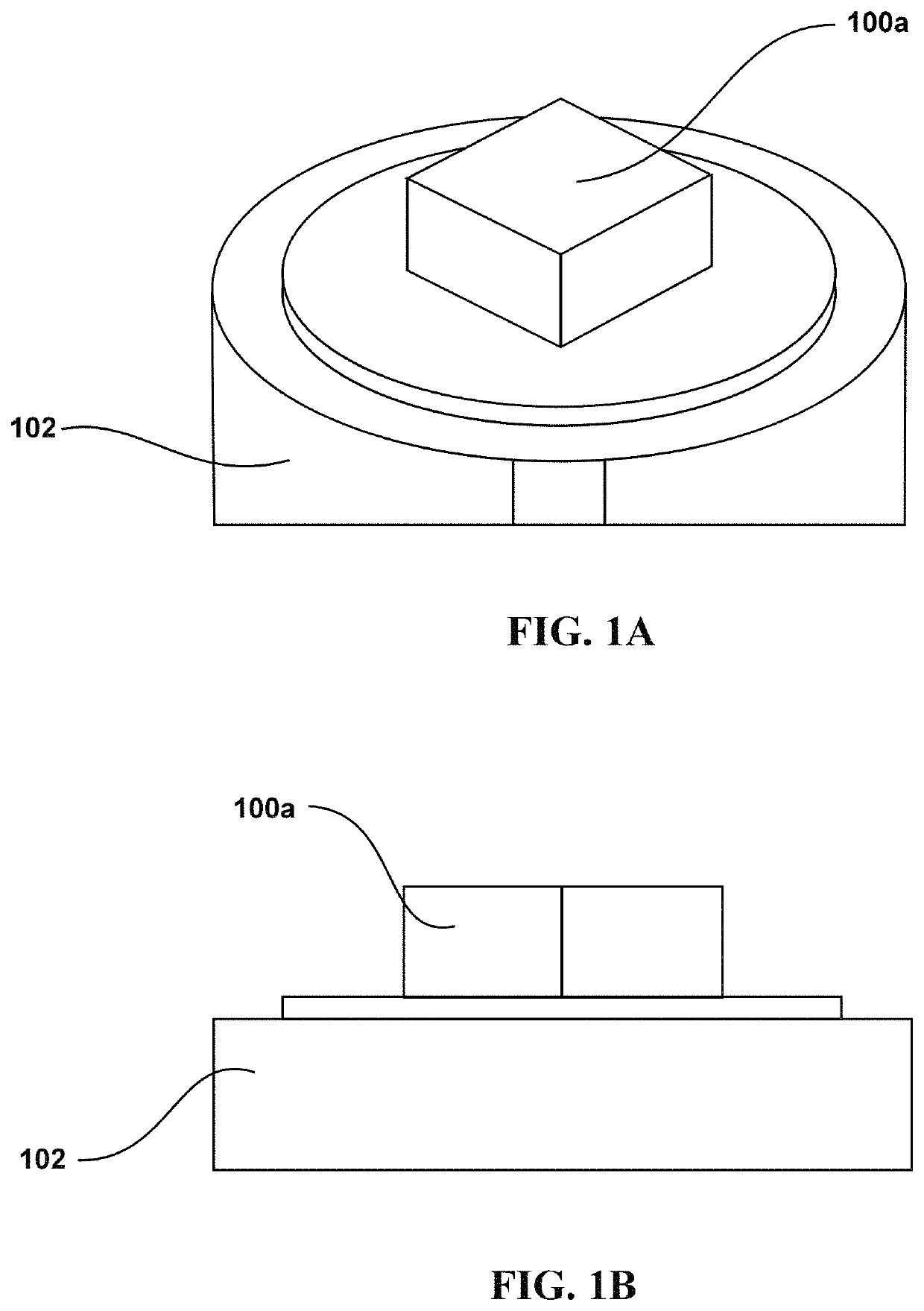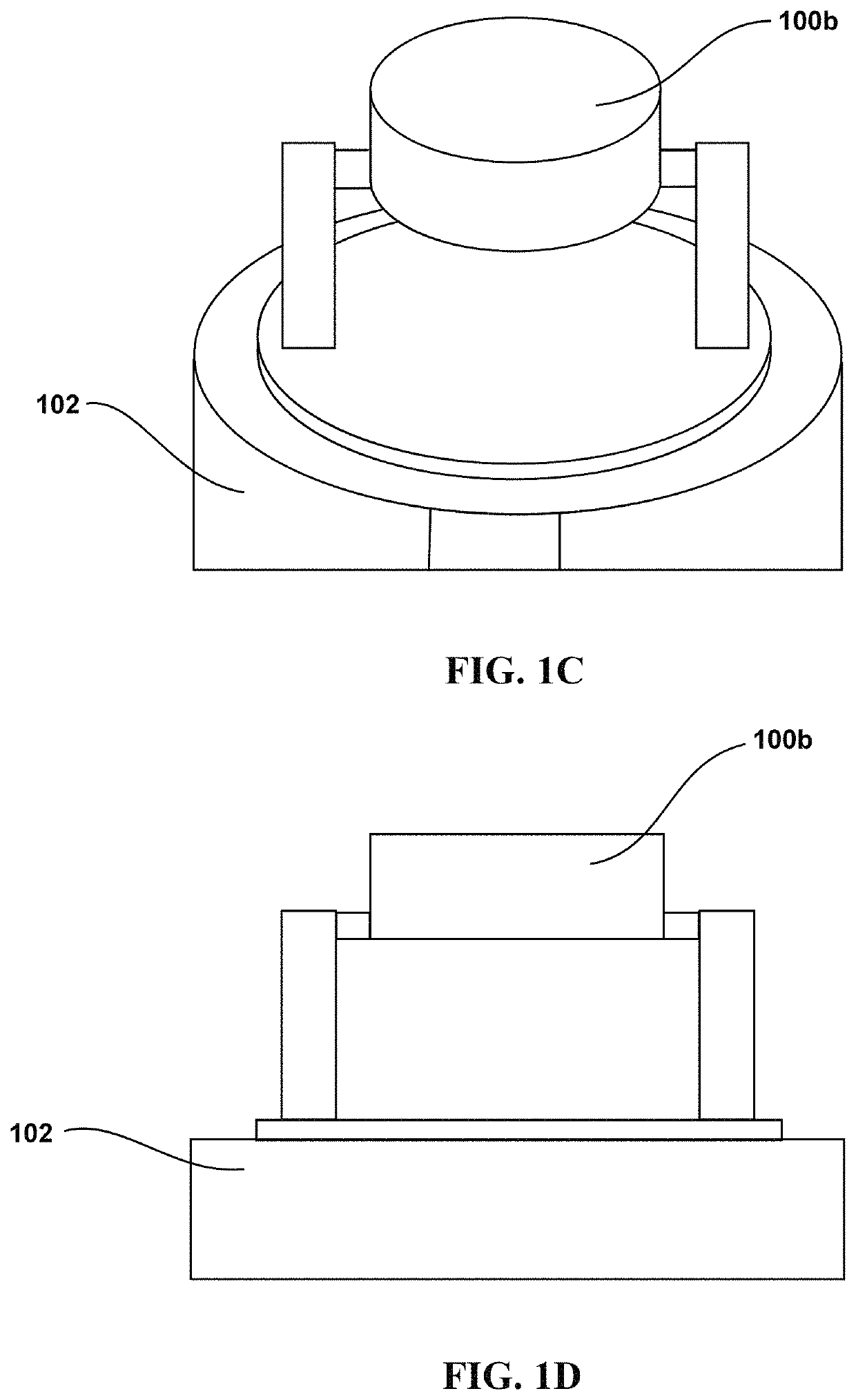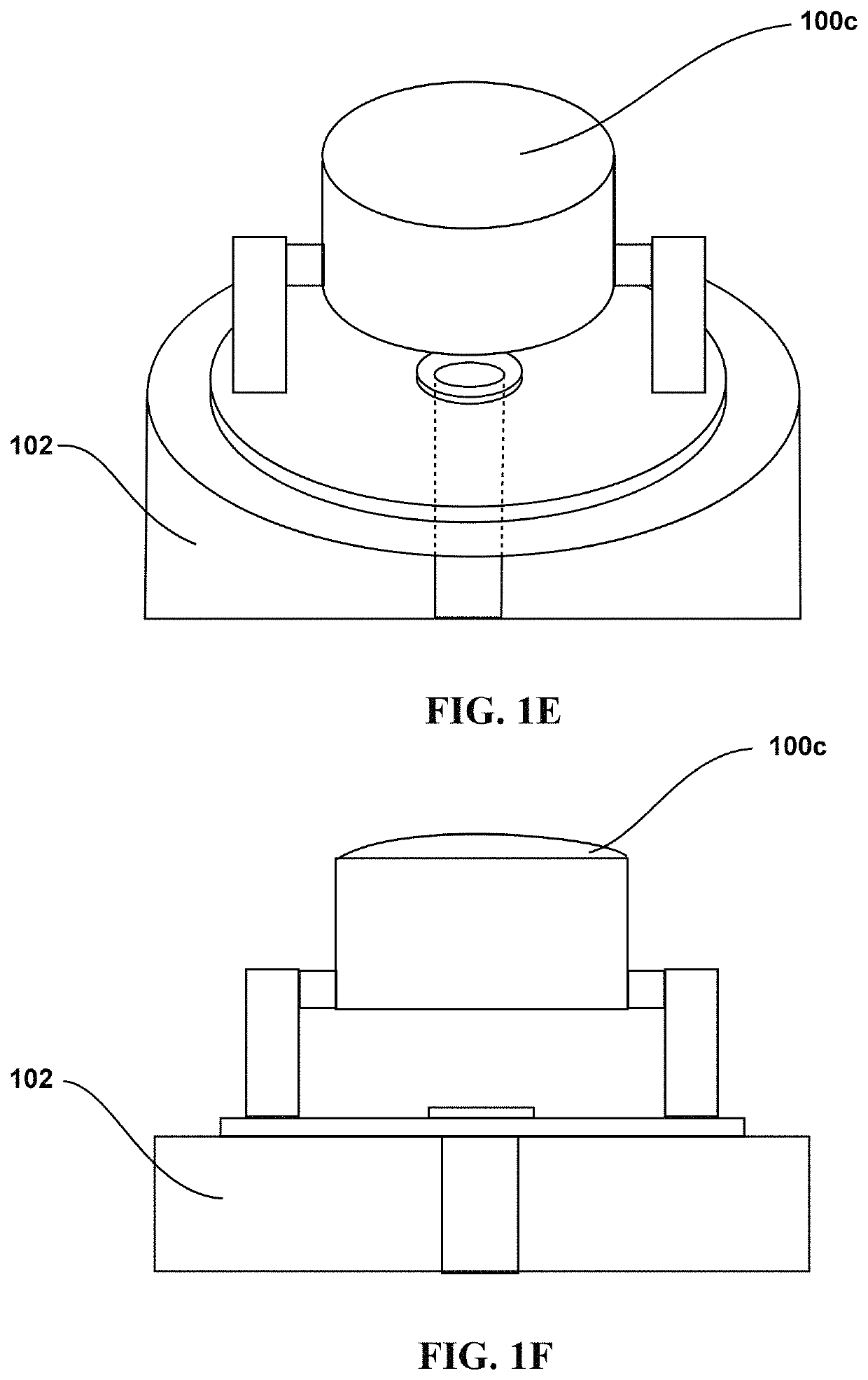Hinged temperature-immune self-referencing Fabry-Pérot cavity sensors
- Summary
- Abstract
- Description
- Claims
- Application Information
AI Technical Summary
Benefits of technology
Problems solved by technology
Method used
Image
Examples
Embodiment Construction
[0037]According to aspects of the present disclosure, a passive microscopic Fabry-Pérot Interferometer (FPI) sensor includes a three-dimensional microscopic optical structure formed on a cleaved tip of the optical fighter using a two-photon polymerization process on a photosensitive polymer by a three-dimensional micromachining device. The three-dimensional microscopic optical structure having a hinged optical layer pivotally connected to a distal portion of a suspended structure. A reflective layer is deposited on a mirror surface of the hinged optical layer while in an open position. The hinged optical layer is subsequently positioned in the closed position to align the mirror surface to at least partially reflect a light signal back through the optical fiber.
[0038]According to aspects of the present disclosure, a method is provided for fabricating a passive optical sensor on a tip of an optical fiber. In one or more embodiments, the method includes perpendicularly cleaving a tip ...
PUM
 Login to view more
Login to view more Abstract
Description
Claims
Application Information
 Login to view more
Login to view more - R&D Engineer
- R&D Manager
- IP Professional
- Industry Leading Data Capabilities
- Powerful AI technology
- Patent DNA Extraction
Browse by: Latest US Patents, China's latest patents, Technical Efficacy Thesaurus, Application Domain, Technology Topic.
© 2024 PatSnap. All rights reserved.Legal|Privacy policy|Modern Slavery Act Transparency Statement|Sitemap



